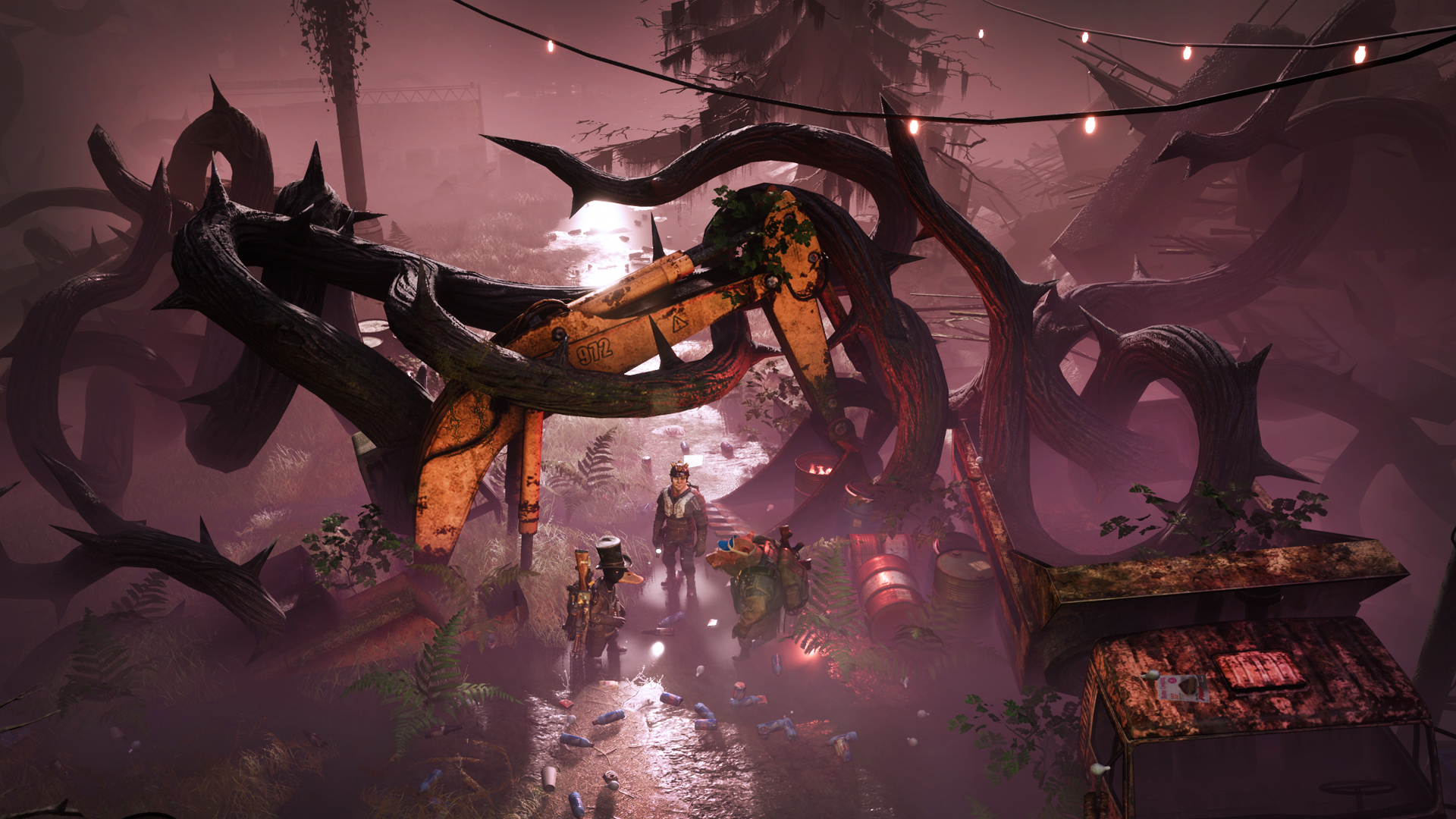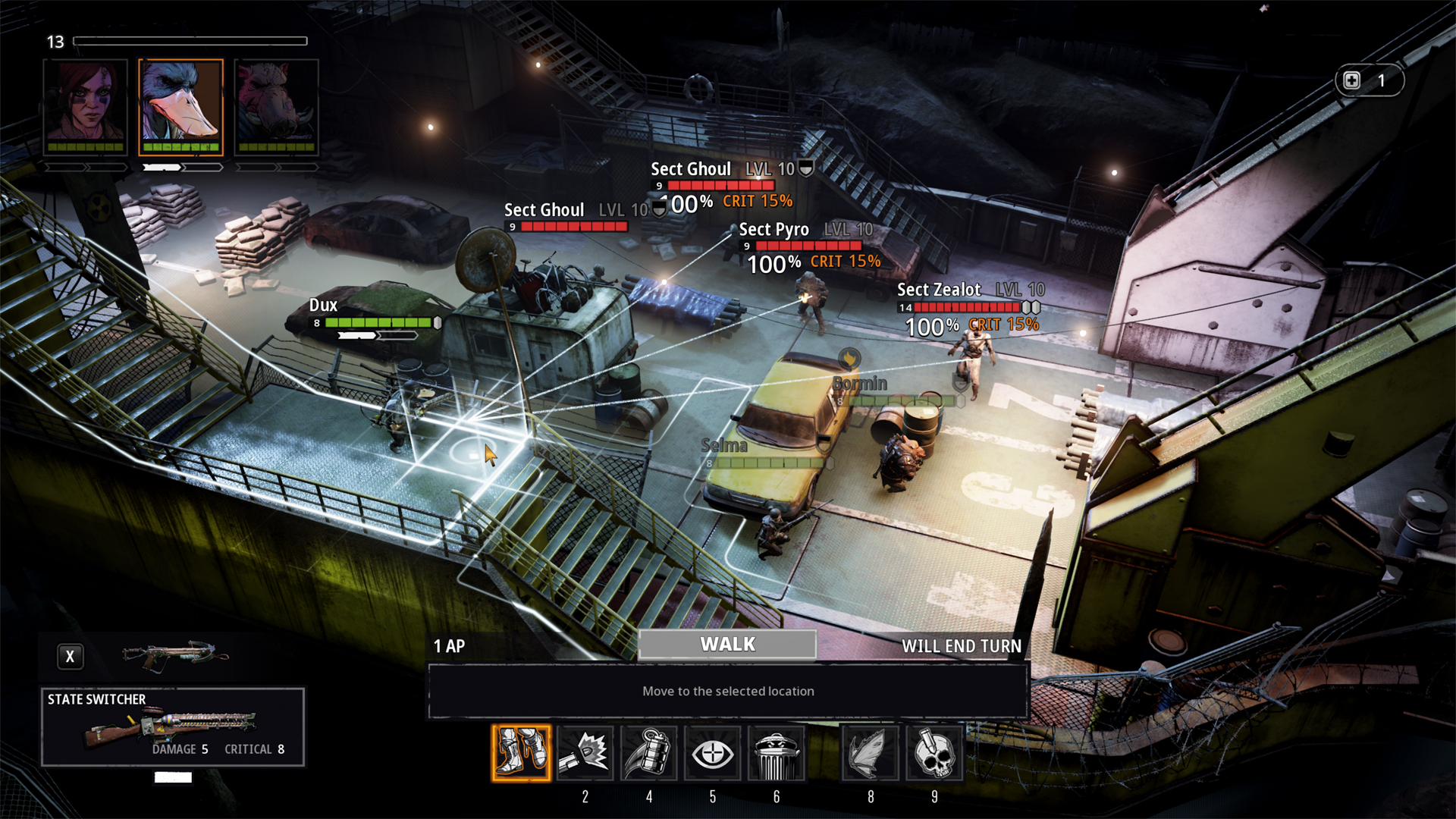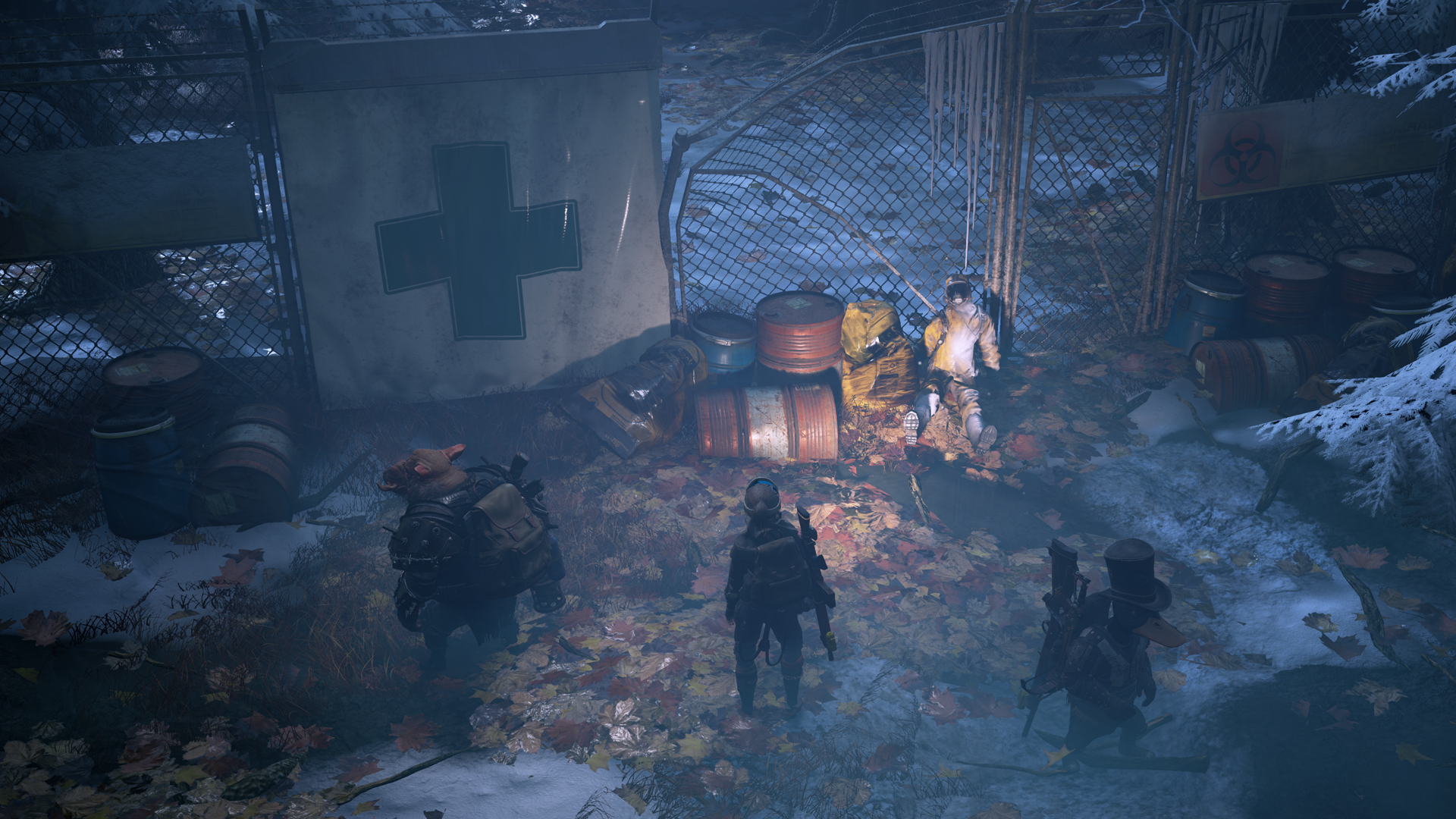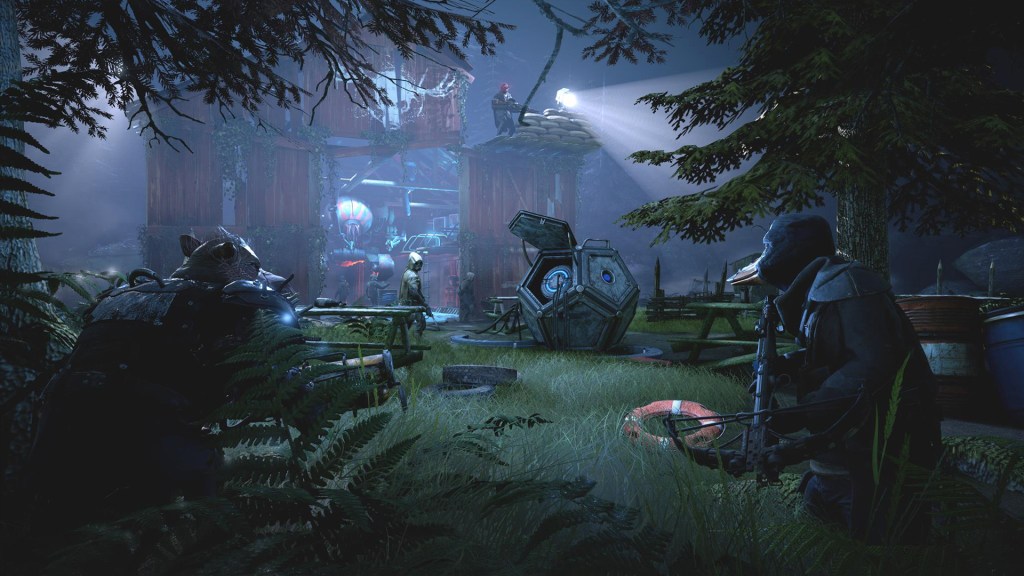The characters of Mutant Year Zero are scouts and scavengers, not soldiers, and the game tries to reinforce this at every turn. It teaches you that if you open fire on the first enemy you see, you’ll bite off way more than you can chew. You’ll simply be overwhelmed as more enemies hear the fighting and come swarm your position. So the name of the game is reconnaissance.
Scouting and recon are important in a lot of tactics games, but here is the crucial difference: In Mutant Year Zero, it’s actually fun.
Videos by VICE
Until you’re in a stand-up fight, Mutant Year Zero plays a lot more like Shadow Tactics than it does XCOM. Enemy sentries and scouts patrol around their camps, casting a detection radius around themselves that you can avoid. It’s an easygoing system, one that mostly exists to let you set up neat little ambushes of isolated enemies, taking them down with a volley of silenced weapon shots. But the important point is that it is fast and seamless until you either take your shot or you get caught sneaking. Do it right, and you’ll slowly whittle the enemy down to nothing before you engage their main force.

Mutant Year Zero makes it feel so natural that it’s easy to forget this is harder than it looks. In XCOM one of your biggest enemies is your own impatience (or, in the case of our Tactical Tuesdays stream that Austin and I do together, Austin’s impatience and I daresay recklessness). You either painstakingly advance your squad through a largely empty level until you catch a glimpse of the enemy, or you can just skip ahead to the combat by rushing your soldiers forward until something happens. If you do the former, you’ll spend several turns advancing a few steps at a time, taking up positions for a battle that rarely ever happens. If you take the latter approach, the odds are good you’ll end up feeding your troops into a meat-grinder. Recon and stealth are necessary in XCOM but they’re not that much fun.
And XCOM is a game that largely does well at handling this! One of the tragedies of Phantom Doctrine was that it had a fairly involved stealth phase of most missions, but it played out like the slowest, fussiest turn-based tactics game with the payoff being that nothing would happen. The better you did with Phantom Doctrine, the slower and duller the game got as your elite spies crept through facilities, disabling security and taking out guards. The idea was a good one and it largely worked… the results just weren’t very much fun.
With Mutant Year Zero, the entire stealth system leads you to repeat some variation of this exciting moment: You’ve got a lone enemy guard in your sights. If you can bring this guy down in a single turn, he won’t be able to raise the alarm and you’ll remain in stealth, free to creep up on the camp he was guarding. But he’s still got too many hit points, and even if all your silenced weapons hit, he’d still be left standing at the end of it and would call for help. So you face a choice: You can burn a character’s ability power on some kind of stunning or incapacitating attack, or you can roll the dice and hope that you land a critical hit for extra, fatal damage.

That moment is always nerve-wracking in Mutant Year Zero, and it’s one that the game serves up without much fuss or delay. A few minutes of recon will usually reveal who you need to hit, and who you need to avoid. Then it’s time for a series of down-to-the-wire stealth attacks before the main battle.
But, and this is the flip side of games that basically operate across both a stealth phase and a combat phase, Mutant Year Zero gets much harder and frequently less fun if you’re discovered. As Dia Lacina put in her memorable Shadow of the Tomb Raider review: “The problem is that stealth mechanics are only as good as the combat that starts when stealth is broken.”
With Mutant Year Zero, the tactical combat is fun and rewarding. The trouble is that it’s most fun and rewarding when things go roughly right for you during the stealth phase. When you’ve made a perfect stealth attack on enemy camp in Mutant Year Zero, the chances are you’ll end up with a manageable fight against a small crowd of enemies. It probably won’t be a pushover engagement, but it’ll be well within your capability. When you mishandle things, or you haven’t fully scouted the level and you missed a couple extra enemies, the ensuing fight ranges from “extremely difficult” to “reload and try the whole thing again”. The result is a game that feels like it’s tuned so that successful stealth attacks are essential, not just helpful.

This doesn’t ruin Mutant Year Zero, far from it. I don’t think it’s necessarily a bad thing when a game encourages you to abuse the save feature, and the time was when most games basically required that. Most of the time, Mutant Year Zero is serving up pretty enjoyable battles that are just thorny enough that you’ll feel like a combat genius for having solved them.
It’s more that the intersection of scouting, stealth, and combat is an enormously complicated one that poses more challenges than there seem to be clear solutions. When all these things work together well, the flow from reconnaissance to preparation to full combat is enormously satisfying. But making them work well together when there are so many variables about when that transition from stealth to combat is going to happen remains a stumbling point in a game that otherwise came up with a novel solution to a pacing problem.
Mutant Year Zero gives recon and preparation their due and is a better game for it, but in solving the first part of the puzzle it has emphasized the gap that can open up between how things are “supposed” to go when you play, and how things often do. Ideally, that gap is where a lot of fun chaos can happen. Right now, that gap is where I find out whether I got a passing grade on my stealth tactics. I still hope there’s a better way.
More
From VICE
-

Screenshot: Ubisoft -

Isabel Pavia/Getty Images


